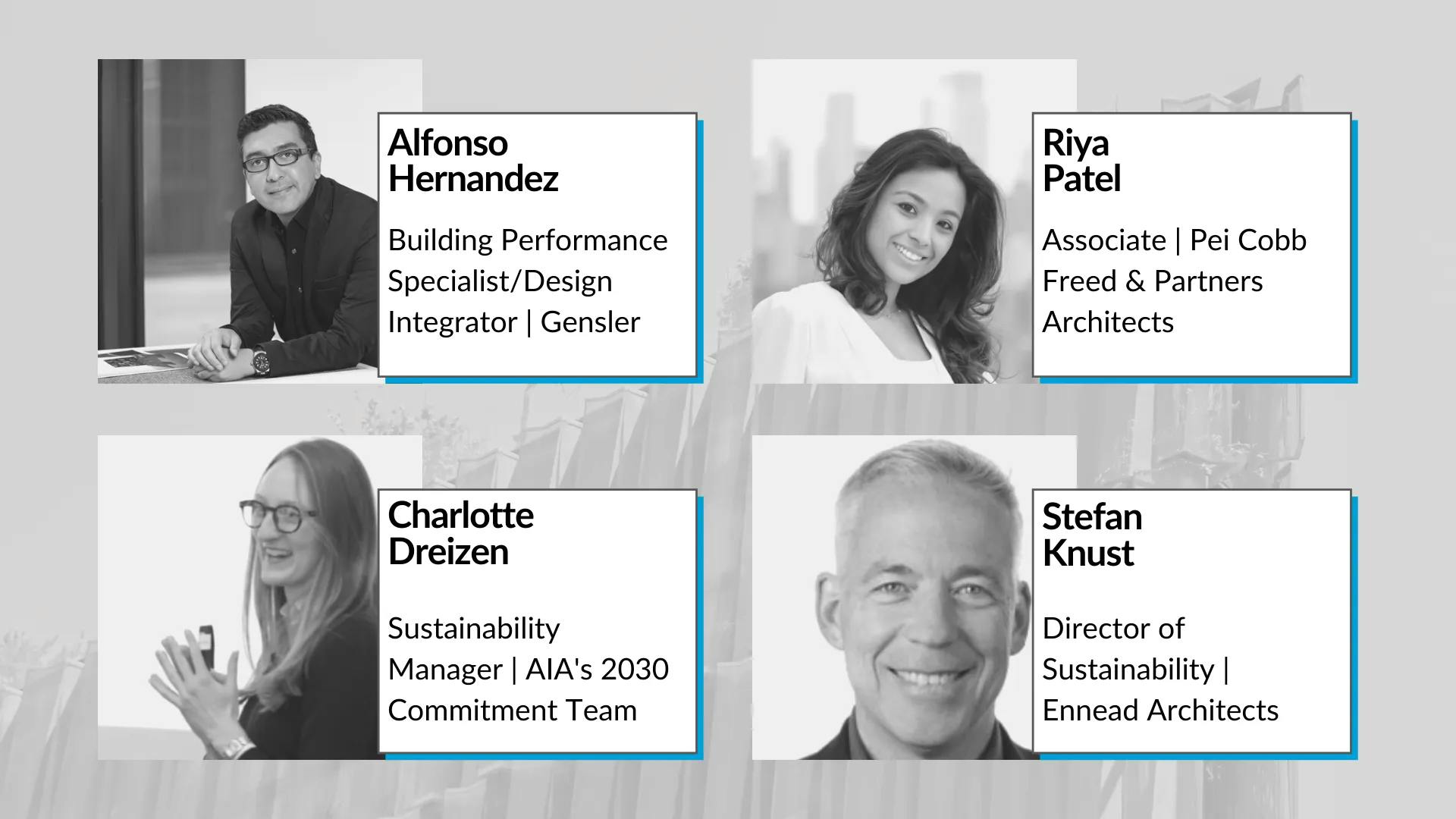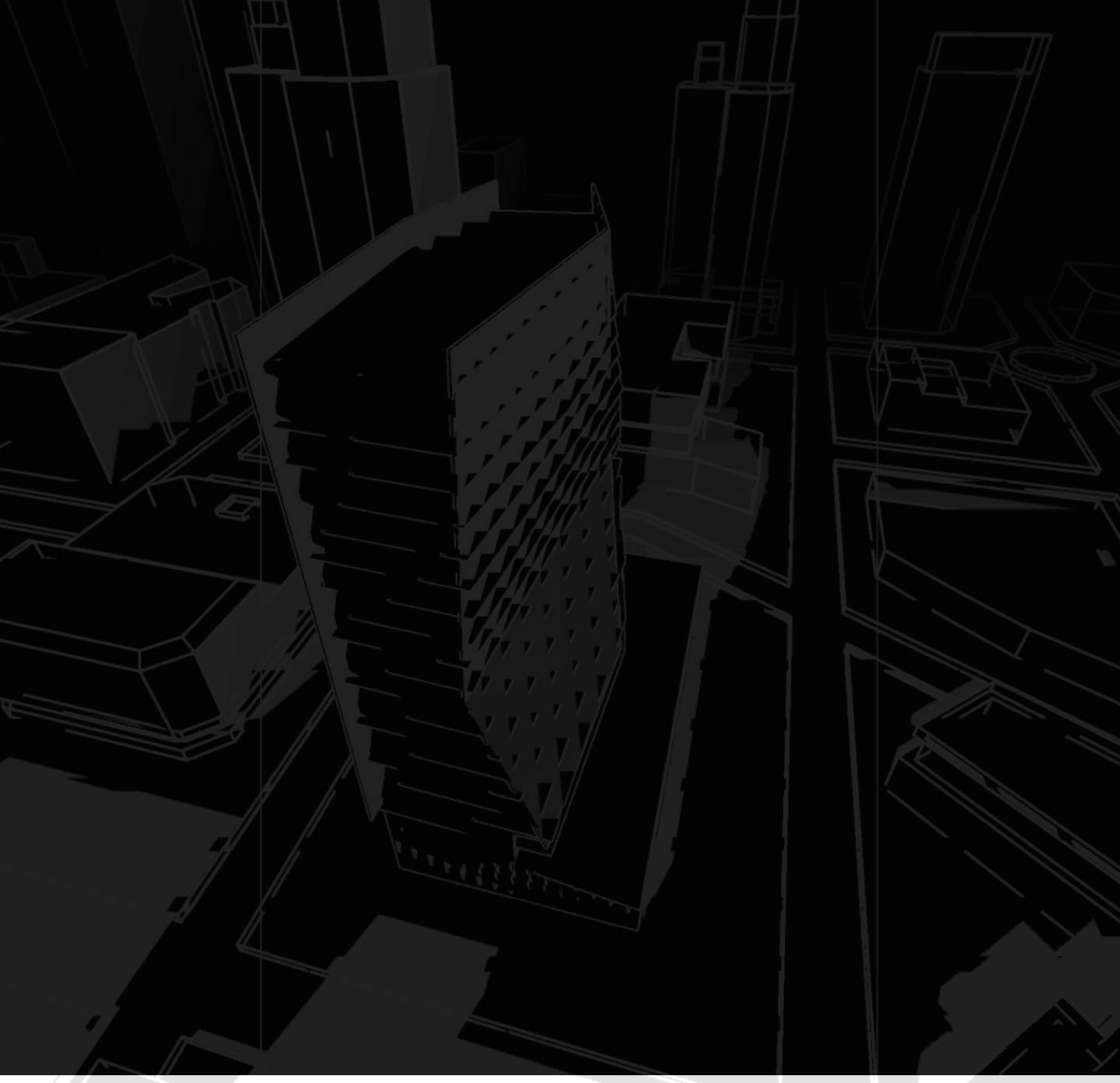
The building industry is a big contributor to carbon emissions, making up almost 40% of the total. With the growing awareness of climate change, architects and industry leaders are looking for alternate methodologies and solutions to reduce the environmental impact of the architecture, engineering, and construction (AEC) industry. The American Institute of Architects' (AIA) 2030 Commitment is one step in this direction.
In a recent panel discussion titled, Getting to the Goal: Strategies to Reach Architecture 2030 Targets, Charlotte Dreizen, Sustainability Manager for Digital Products and Training at AIA, provided some background on the AIA 2030 commitment and its importance by stating that the 2030 commitment is the AIA's effort to corral the industry and all of the players, whether architectural firms, engineering firms, or construction companies, to work towards the goal of net-zero carbon buildings by 2030."
cove.tool CEO Sandeep Ahuja moderated the panel discussion featuring guest panelists and architects Alfonso Hernandez, Riya Patel, and Stefan Knust. This blog post shares key lessons learned from each panelist since joining the AIA 2030 Commitment and provides actionable insights to help AEC professionals meet these targets.
Benefits of the AIA 2030 Commitment
AIA has set a benchmark of an 80% reduction in GHG-emitting energy consumption for participating firms. The target will soon increase to 90% as firms work towards designing carbon-neutral projects over the next few years. The AIA helps firms increase their sustainable design strategies, streamline energy use, and identify processes that can be optimized to meet these goals. With over 1,000 signatories on board, industry leaders are keen to make the most of this opportunity and contribute to a better future.
"The 2030 commitment gives us a good way to benchmark our projects across the board," said Riya Patel, Associate at Pei Cobb Freed & Partners Architects. "We have a lot of international projects. So, it gives [us] a stable baseline that we can compare within our portfolio, and it quantifies those metrics so we can look back at the end of the year and see where we can do better and how much we've improved each year."
AIA's Design Data Exchange, also known as the 2030 DDx, is a platform that lets firms compile their portfolio into one program and streamline the process to analyze energy use intensity (EUI) and set targets. It also summarizes the project's key metrics and strategies for energy reduction, including embodied carbon, off-site renewables, and lighting power density (LPD).
Pei Cobb Freed & Partners Architects have been a part of this program for a decade. It has been a learning process for the firm to teach energy literacy internally and share that knowledge with the industry. Using the AIA's annual reporting process, the firm can reflect on its projects and processes. With these insights, the team can take stock of success stories and identify key discoveries and strategies to implement in upcoming designs. This task has become part of the project process rather than just an annual report.
Consequently, energy modeling has become part of the standard workflow process. For Ennead Architects, the DDx helps start conversations around energy modeling and makes the idea of energy savings accessible and achievable. Similarly, it has helped the members of Gensler become more cognizant of architecture itself and help identify what works in different locations.
But incorporating more analysis is just one facet of the bigger picture. The ultimate goal is to constantly adapt internal design processes to improve the buildings we design. In the past, we only had to meet code. Today, we must exceed code requirements and design efficient, high-performing projects to fight climate change.
Key Considerations to Meet Energy Targets
Another factor in this equation is the local energy codes and regulations for buildings. Gensler's Building Performance Specialist and Design Integrator, Alfonso Hernandez, shared his thoughts on the evolution of energy codes and how these changes impact the way architects approach decarbonization. He alluded that the traditional way of establishing a baseline model and comparing it against a more sustainable model will be challenging. Since the current energy regulations are more stringent, the difference between the two models might not be significant, and any further improvements to the design would be minimal.
He said, "The conversation will have to shift to where am I getting my energy from? Is it going to be on-site? Is it going to be off-site? Is it going to be a community choice aggregator? Is it going to be a community solar farm?" He also added that we need to think from an architectural perspective and determine if a smaller space would be better than a larger space if it performed better and had a lower energy and carbon footprint.
Ennead Architects' Director of Sustainability, Stefan Knust, had a similar opinion. He said that in addition to looking at energy sources, architects should also think about recycling energy.
Understanding heat recovery, insulation, and airtightness of the building envelope can also be modeled in the program to determine performance. The application of passive principles has shown a 50% reduction in predicted EUI for certain projects in the DDx.
"We started studying a number of retrofitting strategies that we could implement on certain buildings in Midtown Manhattan. We've been using energy simulations and evaluating different window-wall ratios, mullion depth sizes, and identifying the weaknesses in these systems," said Patel. "Having this conversation early on and [NYC Local Law 97] is pushing that conversation forward for all of us and helping us think about how we can tighten up the building envelope, so we design and articulate the façade systems better and also enhance their performance."
Understanding the Implications of Energy Modeling on Sustainable Design
This discussion on changing regulations could increase liability if energy models differ after project completion.
"When you're using simulation technology to generate a result, you're just creating a scenario. Similar to when you're tracking a hurricane using spaghetti models. The spaghetti model will not tell you where the hurricane will land, but it will give you an idea," quipped Hernandez.
Patel agreed and explained that it was important to make it clear to a client that the model shown is a relative case scenario. She added, "This isn't going to be the actual result. The model is a prediction using a fair amount of assumptions to the best of our knowledge right now, but by no means is this going to reflect the actual EUI quantity. It's just a relative improvement and a comparative model for us to use."
"Where there are financial implications, it has definitely impacted our profession," noted Knust. "We've realized we need to update our contracts just to make sure that we set clear expectations on behalf of our clients with respect to what happens at the meter and what we're doing for them."
Implementing Sustainable Design Now and in the Future
Ahuja then inquired about buildings that the panels thought exemplified sustainability standards. Hernandez was quick to take the discussion back to structures of the past. He explained how earlier buildings were based on observation and thought, and those principles are now being used computationally to enhance current designs. This new approach combines a good legacy with the right tools available now. Dreizen pointed to the Milken Institute of Public Health and the works of Louis Kahn, for example.
When asked about the steps to lead an architecture firm to zero carbon emission, Patel said that increasing energy literacy was key. Firms must demystify the meaning of site EUI and remain open to new tools to enhance analysis and decision-making. She also encouraged firms to start a dialogue and work with consultants to align their processes to meet energy goals right at the beginning.
Citing the example of Louis Kahn and the application of daylight mapping in his project, Hernandez said that integration was very important. Perhaps even more than the analysis. He also noted that it was essential to identify the relationships and synergies within the several systems in a building.
"Take advantage of all the available AIA resources," added Knust. "Any building you're designing right now will exist during this entire decarbonized economy process. Make sure it can be electrified. If not today, then in the near future. Use the wealth of knowledge we have in the industry and do the work now to make sure your building projects are future friendly."
